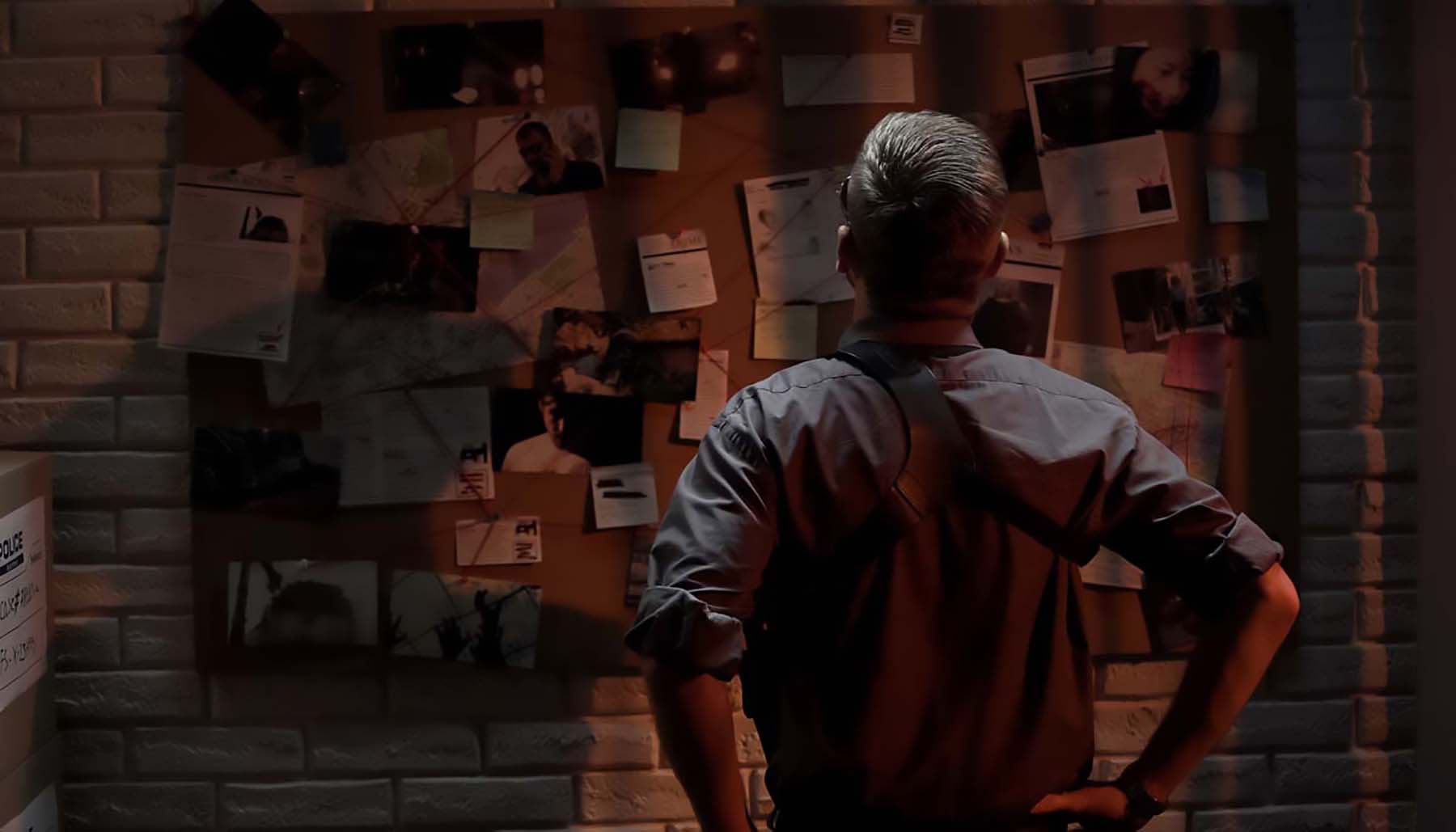Humans love to seek patterns. When we see craters on the moon, the shadows they cast make us think of the image of a face. Even though the world around us is ultimately defined by chaos, we still seek to divine some meaning from the patterns we suspect we see every day. As such, we can’t stand it when there’s a mystery that defies explanation.

When something happens that we simply can’t explain, our minds whirl with possibilities. When the scientific method can’t help us get to the bottom of an event, our imaginations can run wild. Perhaps that’s why so many people are fascinated by unsolved mysteries–if the best detectives in the world can’t solve a crime, then what does that mean for our seemingly-ordered world?
In 1948, a pair of hikers on a beach in Australia found a man who was seemingly sleeping. The nondescript man was fully dressed and had a peaceful look on his face, but the hikers soon realized that he was dead. The police arrived to investigate but found no obvious cause of death, no identifying paperwork on the man, and, indeed, no real physical evidence of any kind to reveal what had happened to the mysterious well-dressed corpse. So, what really happened to the Somerton Man?
Discovering a Bizarre Scene

On a beautiful summer day in Adelaide, South Australia, a pair of hikers walking along Somerton Beach made a grizzly discovery. It was December 1, 1948, and Australia was enjoying a postwar boom in tourism and generally breathing out a sigh of relief that the Second World War had finally come to a close three years earlier. The hikers saw a man who they assumed was napping as they walked by a section of the beach. When they walked back in the other direction and saw he was in the exact same position, they grew concerned and contacted the police.
The police arrived and examined the man, discovering that he’d been dead for at least ten hours by the time they got there. The man was lying on the sand, with his head against the seawall and his legs extended. His feet were crossed, and observers noted that he looked like he’d simply died peacefully in his sleep. The authorities initially thought little of the discovery–they assumed there was no foul play afoot and that the man had simply drifted away while sleeping.
The man had a few personal effects on his person, including a comb, an unlit cigarette, a box of matches, and an unused train ticket.
The police quickly noticed that something strange was happening, though, when they were unable to find any signs of how the man had died. He was in good physical shape, bore no obvious injuries, and an autopsy found no evidence of blunt force trauma. Moreover, no one had reported a family member or husband missing, and the body had no identifying documents. The mystery deepens.
Who Was This Man?
The authorities began to wonder how this was even possible. How does a man simply die in a public place, and no one even mentions that they’re missing him? People in Adelaide didn’t recognize any pictures of the man, and someone had removed all of his clothing tags before his death, making it harder to determine his identity. A small break in the case came on January 14, 1949, when rail workers discovered a suitcase that belonged to the deceased man.
The label had been removed from the suitcase, but it contained some interesting personal items. In addition to clothes and shoes, it contained several sharp instruments–a table knife and a pair of scissors that had been worked into sharp weapons, as well as a square of zinc presumably used as a sheathe for the makeshift knives. Once again, the tags on all of the clothes within the suitcase were removed before authorities got to them.
The most interesting thing about the suitcase for the authorities was that it contained an unusual type of coated thread that could be used to repair the man’s distinctive trousers. Importantly, the thread wasn’t available in Australia, meaning the man was either a foreigner or he at least traveled out of the country often. Likewise, his coat was manufactured in the US but not imported, leading authorities to believe that he traveled to America.
Inquest into the Death

An autopsy performed by the coroner identified in historical documents as Dr. Dwyer concluded that the Somerton Man had likely been poisoned. An inquest opened by another coroner, Thomas Erskine Cleland, sought further information on the nature of his death. Dwyer wrote that he was uncertain what kind of poison would cause the internal injuries he observed in the man’s liver, brain, and spleen.
“I am quite convinced the death could not have been natural … the poison I suggested was a barbiturate or a soluble hypnotic,” Dwyer concluded. Cleland wanted more information and asked medical experts to weigh in on the case. Cleland noted that some witnesses claimed to have seen a man matching the deceased’s description on the beach on the evening of November 30, 1948, but that the physical evidence seemed to suggest that the man may have been dumped on the beach by another person.
Professor Cedric Stanton Hicks of the University of Adelaide testified that there were some combinations of drugs that could be virtually undetectable and used as poisons in such a case. He specifically noted digitalis and ouabain as a pair of potential poisons that could have been responsible for the Somerton Man’s death. However, he was unable to determine whether someone had forced him to ingest the poison or if he’d done it himself to end his own life.
Tamam Shud
The case took its strangest turn yet when police discovered a scrap of paper hidden in a fob pocket in the deceased’s trousers. The scrap bore an odd phrase: “Tamam Shud,” a Persian term that translates roughly to “it is finished” or “ended.” It’s the final phrase in a popular book of poetry called The Rubaiyat of Omar Khayyam, and librarians from Adelaide were able to determine that the scrap of paper found in the man’s pocket must have been torn from a rare New Zealand edition of the book.
Incredibly, the authorities found the exact copy of the Rubaiyat that the scrap was torn from. The circumstances under which the authorities tracked the book down are a bit contentious, but the official story goes that after a public appeal from the police, a man came forward with a copy of the exact version of the Rubaiyat. Incredibly, he said he’d parked his car near Somerton Beach on November 30 and had his back windows rolled down. When he returned to his car, the book was simply sitting in the back seat.
This copy of the book further deepened the mystery. Police discovered that handwriting could be made out on the back page of the book–notes that were written on another piece of paper while bearing down on the book’s page. The handwriting appears to be a cipher, but codebreakers have never managed to determine what it means for certain. One more important detail was found in the book, too: a phone number belonging to a nurse named Jessica Thompson.
Jessica Thompson
Police quickly interviewed Thompson, who was the only living person with a direct connection to the case. Thompson proved less than cooperative. After being shown a plaster cast of the dead man’s head, onlookers say she was taken aback. However, she then claimed to have never seen him and wouldn’t look at the cast again during the interview.
Experts connected to the case over the years have shared the opinion that Thompson knew the man in life and had personal reasons for never disclosing the nature of their relationship. Perhaps most importantly, the man’s body was found only a few hundred feet from Thompson’s street. She lived close enough to Somerton Beach to see the sands from her bedroom window.
In a televised interview in 2014, Thompson’s daughter, Kate, told reporters that she strongly believed her mother knew the Somerton Man before his death. However, Kate says her mother never told her anything about the man and refused to ever mention the case.
Theories
The case goes ice cold after the Thompson interviews. Some theories regarding his identity have been put forth by various detectives and authors, but perhaps the most compelling is the theory that he was a spy in the employ of the American or Russian government. The Radium Hill uranium mine and the Woomera Test Range military research facility were both located near Adelaide and would have been locations of interest for any intelligence operative.
This theory also hinges partly on the man’s alleged connection to Jessica Thompson. Interestingly enough, her longtime friend Alf Boxall served in the Australian military and also possessed a copy of the Rubaiyat. In fact, Thompson herself noted in interviews that she gave Boxall the book. Boxall’s military service doesn’t indicate that he was ever connected to an intelligence unit–but that wouldn’t be strange if he was engaged in undercover espionage.
In any event, the case of the Somerton Man and his bizarre death continues to haunt amateur sleuths. In 2022, a team of researchers claims to have discovered the man’s identity using DNA sequencing, identifying him as Carl Webb. However, investigators aren’t certain that this is true, so the case remains unsolved for now.












